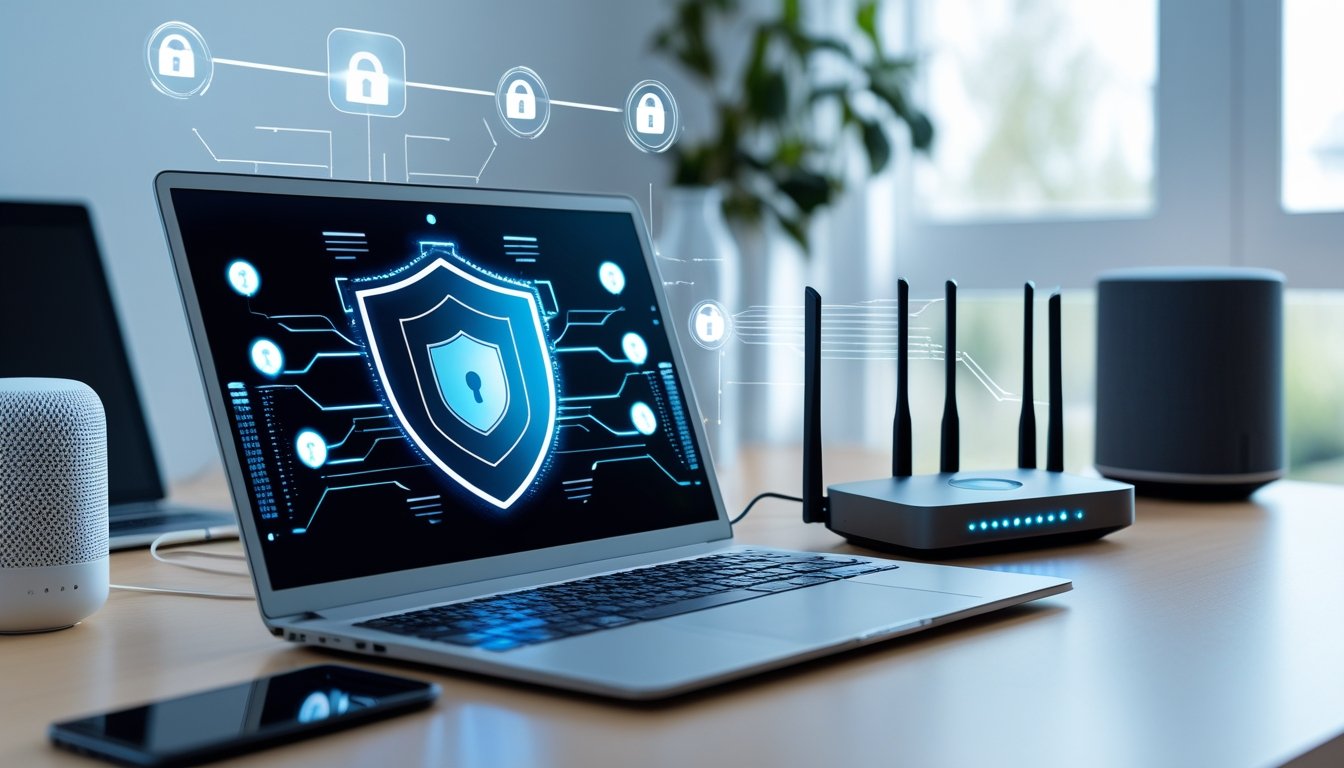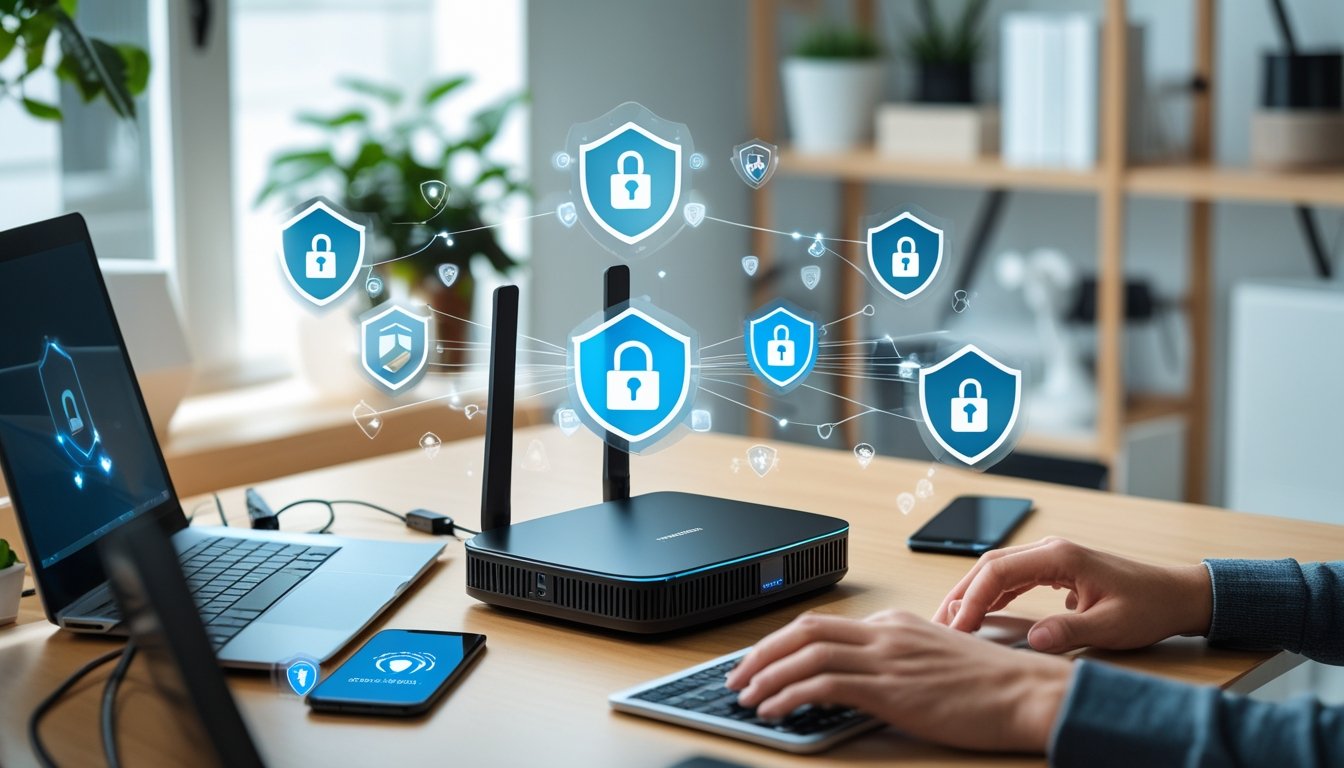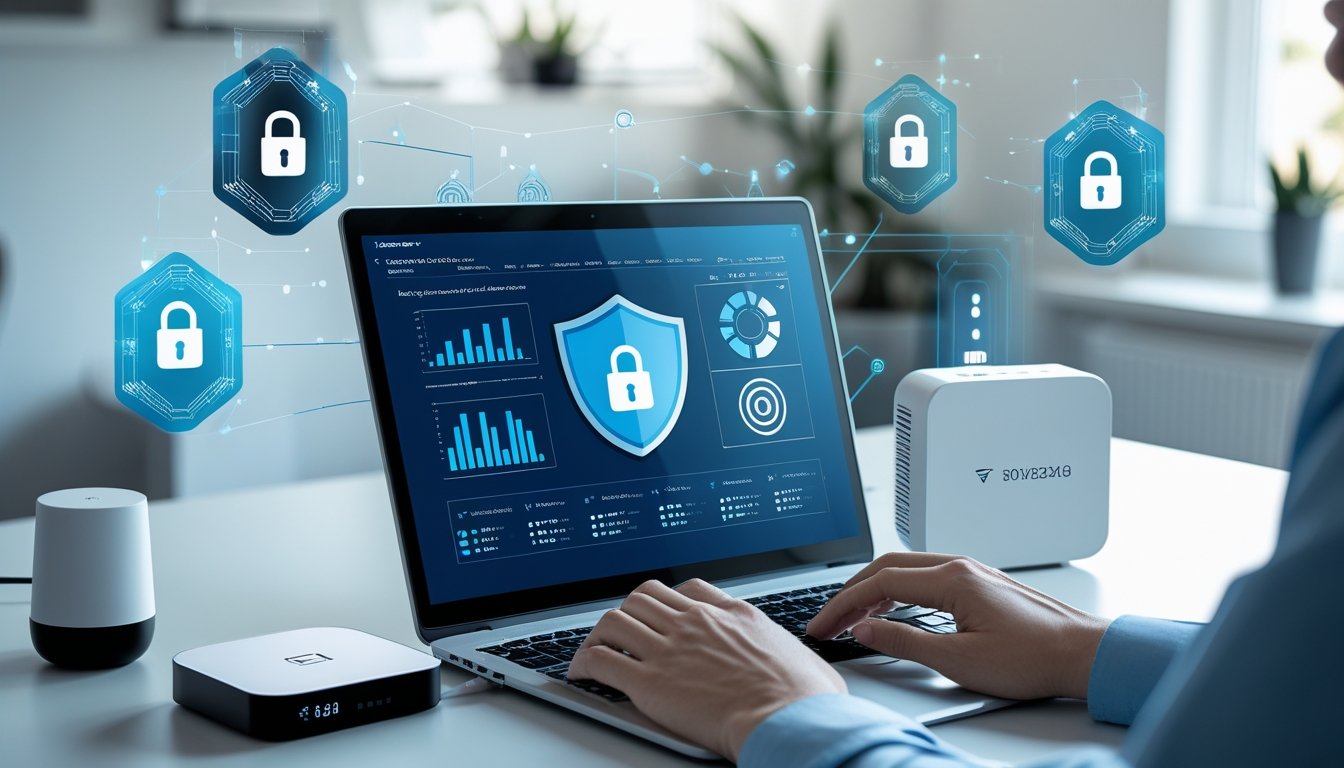Late updated: 03 Sep 2025 11:09
Written by: Elena Prescott
Innovative Ways To Secure Your Home Network: Essential Tips For Enhanced Safety
In an era where digital threats are constantly evolving, securing our home networks has never been more crucial. Cyber security isn't just about the devices we use—it's about protecting the data that flows through our networks every day. The key to a secure home network lies in embracing innovative security measures that go beyond basic protection.

Today, we find ourselves relying on technology more than ever, with smart devices becoming integral to modern life. This shift requires us to rethink how we safeguard our personal information. From advanced router settings to monitoring network activity, innovative methods offer a robust defence against cyber threats.
As we explore these cutting-edge solutions, it's essential to stay informed about the latest trends and tools in network security. There is no single solution that fits all, so understanding the unique needs of our home network can provide significant advantages.
Key Takeaways
- Innovative security measures enhance home network safety.
- Embracing new technologies strengthens our defences.
- Understanding network needs is crucial for effective protection.
Essential Security Measures for Your Home Network

Securing our home networks is vital to protect our data and devices. It's essential to focus on router settings, Wi-Fi security, and access management to enhance network security.
Strengthening Router Settings
First, our router settings need careful attention. Changing the default administrator credentials is imperative. Use a unique username and a strong password. Automatic updates should be enabled to ensure the router receives the latest security patches, hardening it against vulnerabilities. Disabling WPS (Wi-Fi Protected Setup) is recommended due to its known security flaws.
A robust firewall is crucial. Most modern routers include one, but it might not be enabled by default, so let's ensure it's active. For remote access settings, disabling them reduces the risk of unauthorised access. It's advisable to explore DNS filtering for an added layer of security by blocking malicious websites at the DNS level.
Implementing Advanced Wi-Fi Security
For Wi-Fi security, opting for WPA3 encryption is a smart choice, providing enhanced protection over its predecessor, WPA2. Additionally, changing the SSID from the default name makes it harder for attackers to identify our network's router manufacturer. Strong Wi-Fi passwords are non-negotiable; they should be complex and periodically updated.
To protect our network further, disable UPnP (Universal Plug and Play) as it's a potential vector for attacks. Consider implementing a mesh Wi-Fi system for better coverage while maintaining security. Lastly, adopting encrypted DNS helps secure our DNS queries from prying eyes, ensuring our browsing remains private.
Managing Network Access and Segmentation
Managing who and what can access our home networks is essential. Setting up a guest network separates our primary network from visitors, preventing them from accessing our connected devices. This segmentation can also be achieved using VLANs (Virtual Local Area Networks), further isolating different groups of devices.
We need to pay particular attention to IoT devices, as they're often targeted by attackers. Isolating these devices on a separate network minimises risks. Monitoring connected devices regularly allows us to identify any unexpected or unfamiliar devices quickly. Content filtering can safeguard against harmful sites and inappropriate content, especially if children have access to our network. Employing these strategies helps maintain secure and controlled access throughout our network.
Innovative Approaches to Device and Network Protection
As technology advances, safeguarding our home networks becomes increasingly sophisticated. We need to employ strategies such as Zero Trust security, advanced network monitoring, and robust protection for IoT devices to stay ahead of potential threats. Each method contributes significantly to a secure digital environment.
Zero Trust for Smart Homes
The Zero Trust model redefines security by eliminating the notion of trust in a network. Instead of assuming internal network security, it requires strict identity verification for every user and device. In smart homes, this approach ensures that even if a smart device like a voice assistant or security camera is compromised, it doesn't grant access to the entire network. By implementing a rigorous vetting process, including two-factor authentication (2FA), we significantly minimise the risk of brute-force attacks and other cyber threats.
Network Monitoring and Threat Detection
Effective network monitoring is crucial in identifying and addressing potential threats before they become problematic. Intrusion Detection Systems (IDS) play a pivotal role here by constantly analysing network traffic to flag suspicious activities. Leveraging advanced cybersecurity tools, we can maintain oversight over all connected gadgets. We must also consider tools that offer real-time alerts and reports, allowing us to react promptly to anomalies. Employing these measures along with a VPN to encrypt data transmission creates a robust frontline defence against intruders.
Protecting Connected Gadgets and IoT Devices
With the proliferation of IoT devices, ensuring their protection is paramount. Each device, from our smart fridge to connected thermostats, is a potential entry point for malicious entities. Ensuring devices have updated antivirus software and the latest security patches is essential. Furthermore, implementing enterprise-grade security features, such as device-level password encryption and traffic segmentation, can provide additional layers of security. By focusing on device protection, we can mitigate risks and secure our home network effectively.
Frequently Asked Questions

In today's digital landscape, securing home networks is more vital than ever. Here, we address commonly asked queries, offering clear solutions to safeguard your WiFi and connected devices.
What steps can I take to enhance the security of my WiFi router at home?
To secure your WiFi router, change the default login credentials and enable WPA3 encryption, if available. Regularly update the router’s firmware to fix vulnerabilities. Disable remote management and UPnP if they're unnecessary. Set up a guest network for visitors to avoid exposing your primary network.
What measures should I implement to protect my home network against cyber threats?
Install a robust firewall and enable intrusion detection systems. Use a Virtual Private Network (VPN) to encrypt traffic. Configure your router to limit access by MAC addresses. Ensure all connected devices have updated antivirus software and regularly back up important data.
Could you suggest a secure home network design that's well-suited for remote work?
Consider using a mesh network for seamless connectivity and security across all areas. Isolate work devices on a separate VLAN to prevent potential cross-infections. Use network access control to ensure that only authorised devices can connect to your network. Maintain a dedicated firewall for business use.
What devices are recommended to ensure home network security?
Invest in smart firewalls and modern router models with advanced security features. Use internet security devices like Bitdefender Box or Cujo AI. Add network monitoring tools like Fingbox to track unusual activities. Consider installing a security application on each device connected to your network.
What are the best practices to prevent unauthorised access to my home wireless network?
Utilise strong, unique passwords for both the network and router admin access. Disable SSID broadcasting to hide your network from potential intruders. Enable two-factor authentication for additional security. Regularly review connected devices and remove any that you do not recognise.
How can I defend my WiFi network from potential hacker intrusions?
Adopt regular network audits to identify vulnerabilities. Deploy strong, complex passwords and change them periodically. Use advanced encryption protocols like WPA3. Diversify your security approach by implementing multiple defensive layers, such as firewalls, VPNs, and ongoing software updates for all connected hardware.
